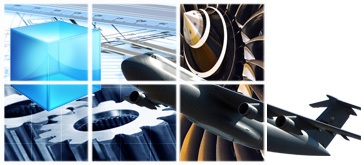The ATRC initiative developed real time solution techniques and algorithms for a reconfigurable control and guidance system for autonomous reusable launch vehicles (RLVs). ATRC includes on-line parameter learning and real time reshaping of vehicle trajectories under uncertain damage/failure scenarios.
The U.S. Air Force, to keep pace with the demands of homeland security and global operations, is exploring methods for improved space utilization. A significant impediment to increased space utilization is the huge cost of launching operations, and the Air Force is investigating more affordable launch operations via a number of Reusable Launch Vehicle (RLV) programs. Part of the focus is on maintaining the economic viability of RLVs by enhancing operations safety and reliability; i.e., to improve RLV capabilities for responding to various uncertainties and emerging situations.




